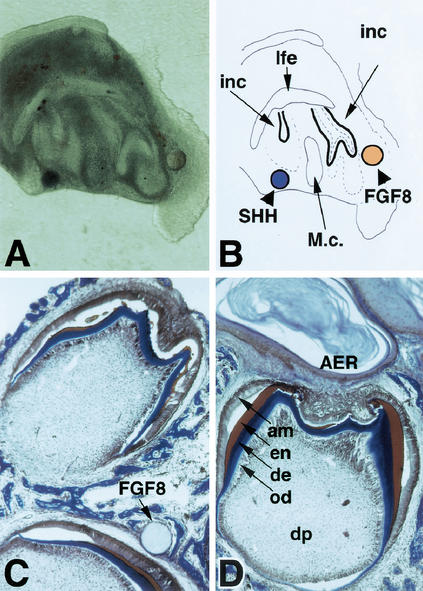Figure 2.
Rescue of arrested Lef1−/− tooth development by recombinant FGF proteins. (A,B) In vitro culture of an E13.5 Lef1−/− mandible that contains a pair of incisor rudiments and has been associated with a bead soaked in SHH (left side, blue Affigel bead) or FGF8 (right side, brown heparin acrylic bead), respectively. A shows a live explant after 3 d of in vitro culture, and B is a graphic presentation of the structures. Note that only the right incisor anlage next to the FGF8 bead has formed a cap (and a fully developed tooth on subsequent transplantation under the kidney capsule). inc, incisor buds; lfe, lip furrow epithelium; M.c., Meckel's cartilage. (C,D) Full development of E14.5 Lef1−/− tooth germs that have been incubated with FGF8-soaked beads (C) or apical ectodermal ridge (AER) of an E10.5 mouse hindlimb (D) in vitro for 3 d and transferred under the kidney capsule for another 9 d. Typical multicusp molars with ameloblast (am) and odontoblast (od) layers, dentin (de, blue), enamel (en, red), and dental pulp (dp) are formed. The limb ectoderm including the AER has persisted in forming a cyst with keratinized layers inside.

